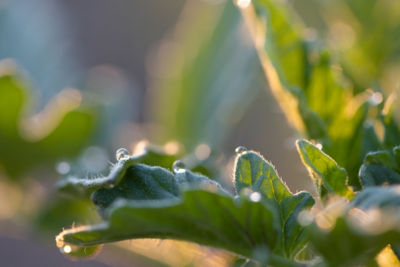Click here to download a PDF version of this spotlight.
» Mycorrhizae have been shown to improve the growth and yield of vegetable crops.
» Mycorrhiza is a mutualistic association between fungi and plant root systems.
» Pre-plant inoculation with mycorrhizal fungi can increase mycorrhizal root colonization
WHAT ARE MYCORRHIZAE?
Mycorrhiza is the term for the association between fungi and plant root systems, where both the plant and fungal partners benefit from the association. About 80% of all plant species, including most crop plants, and 92% of plant families develop mycorrhizal associations.1 There are several different types of mycorrhizal, with arbuscular mycorrhiza (a type of endomycorrhiza) being the most common.2 Arbuscular mycorrhiza form when arbuscular mycorrhizal fungi (AMF) penetrate roots and establish close interactions with the cortex cells within the root (Figure 1).
 Figure 1. Arbuscular mycorrhizal fungi (AMF) functionally extend the surface area of the root and increase the volume of accessible soil by forming close physical associations with root cells.
Figure 1. Arbuscular mycorrhizal fungi (AMF) functionally extend the surface area of the root and increase the volume of accessible soil by forming close physical associations with root cells.
Arbuscular mycorrhizae have been shown to provide several benefits to plants including increased nutrient uptake, improved water relations, increased tolerance to soil salinity, and protection from pathogens.3,4 In particular, mycorrhizae improve the uptake of phosphorus (P), and responses to mycorrhizal colonization are often most notable in soils where the availability of P is limited.5 AMF act as an extension of the root system, colonizing soil up to 3-inches away from the roots, and the fungi can mobilize otherwise inaccessible nutrients and transport them back to the root. Studies have shown that the uptake of P per unit root length is two- to three-times greater in mycorrhizal plants than in the same plants without mycorrhizae.3 The benefit to the fungal partner is the transfer of carbohydrates and other nutrients from the plant to the fungus.1
Mycorrhizal colonization has been shown to result in increased nutrient uptake, as well as root and shoot growth. However, there is a lot of variation in the result from studies on mycorrhiza, and responses have varied greatly with the species of AMF used, the source and viability of the fungal inoculum, the host plants, and environmental conditions.1
There are indigenous AMF in many natural and crop soils that colonize crop plants at some point during the season. The AMF species present and their population levels in the soil depend on the previous crops, the type and amount of tillage used, and other agronomic and soil factors such as the use of fertilizers and soil pH.3 One study found that inoculating leek seedlings before planting improved plant growth in a conventional cropping system but not in an organic system because there was a greater abundance of indigenous AMF in the soil of the organic system.
COMMERCIAL AMF INOCULUM
Pre-plant inoculation of seedlings can increase the percentage of AMF colonized roots and increase colonization by desired AMF species, and several commercially produced AMF inoculants are now available. Some commercial inoculants are labeled as containing only a single species of AMF, while others are labeled as containing ten or more different organisms including AMF, plant growth promoting bacteria, and biological control agents such as the fungus Trichoderma.6 Some seed technology companies are offering mycorrhiza, growth promoting bacteria, and other organisms including Trichoderma in combination with their pellets and encrustments as a means of delivering inoculum to seedlings. There is some concern that commercial AMF inoculants may not be as effective as indigenous AMF. Non-native AMF may not be adapted to the local soil environment and may not compete well with indigenous organisms. The methods by which a commercial inoculant is produced may also impact the purity, viability, and effectiveness of the AMF inoculant.5
A study conducted in a native plant restoration area of Rocky Mountain National Park compared the effectiveness of two commercial inoculants with additions of a native field soil for treating seedlings of native plant species prior to planting. In this study, the two commercial inoculant treatments had low root colonization rates when compared with using a local field soil. The commercial treatments also had only a small effect on plant growth, whereas the some of the field soil inoculated plants showed significant increases in biomass.7
MYCORRHIZAE AND VEGETABLE CROPS
Research-based information on mycorrhizal impacts on vegetable crops is limited, but there has been some work on the topic. A field experiment on the effect of pre-plant inoculation of leek seedlings with AMF did show an increased level of mycorrhizal colonization of roots at transplanting.3 At two months after transplanting, leek roots inoculated with Glomus intaradices showed a root colonization level of 70%, while roots from non-inoculated plants had a colonization rate of 40%. This inoculation treatment resulted in increased P levels in the roots but not in the shoots. Increased root levels of Zn, Cu, and N were also seen in some trials. Increased plant growth in inoculated plants was seen one year of this two-year study. The benefits of mycorrhizal inoculation were most evident in soils with low levels of P.
A study on AMF inoculation of tomatoes showed some positive effects on shoot growth and yield.5 Yield responses varied among the cultivars used in the study, and the effect on shoot growth was inconsistent from year to year.

A study on the inoculation of onion seedlings with three different AMF found increased seedling survival, leaf area, bulb diameter, and yield with the three AMF tested (Table 1).8 A second study looking at the effects of mycorrhizal inoculation on both lettuce and onions grown in saline soils found that inoculation resulted in increased growth of both lettuce and onion plants and an increased tolerance for higher salinity levels.9 Another study found that AMF inoculation of cucumber seedlings resulted in lower levels of root knot nematode development, but there were variations in the level of effectiveness of the three AMF tested.10
The bottom line is that there is no guarantee of success with using mycorrhizal inoculants. Growers should test products in their specific locations with the varieties they use to evaluate the effectiveness of the treatments.
SOURCES
1 Brundrett M.C. 2017. Global Diversity and Importance of Mycorrhizal and Nonmycorrhizal Plants. In: Tedersoo L. (eds) Biogeography of Mycorrhizal Symbiosis. Ecological Studies (Analysis and Synthesis), vol 230: 533-566. Springer.
2 Wang, B. and Qiu, Y. 2006. Phylogenetic distribution and evolution of mycorrhizas in land plants. Mycorrhiza 16: 299-363.
3 Sorensen, J.N., Larsen, J., and Jakobsen, I. 2008. Pre-inoculation with arbuscular mycorrhizal fungi increases early nutrient concentration and growth of field-grown leeks under high productivity conditions. Plant Soil 307: 135-147.
4 Ryan, M. and Graham, J. 2002. Is there a role for arbuscular mycorrhizal fungi in production agriculture? Plant and Soil 244: 263-271.
5 Douds, D., Lee J., McKeever, L., Ziegler-Ulsh, C., and Ganserc, S. 2016. Utilization of inoculum of AM fungi produced on-farm increases the yield of 2 Solanum lycopersicum: a summary of 7 years of field trials on a conventional vegetable 3 farm with high soil phosphorus. Scientia Horticulturae 207: 89-96.
6 Faye, A., Dalpé, Y., Ndung’u-Magiroi,K., Jefwa,J., Ndoye,I., Diouf, M., and Lesueur, D. 2013. Evaluation of commercial arbuscular mycorrhizal inoculants. Can. J. Plant Sci. 93: 1201-1208.
7 Rowe, H., Brown, C., and Claassen, V. 2007. Comparisons of mycorrhizal responsiveness with field soil and commercial inoculum for six native montane species and Bromus tectorum. Restoration Ecology 15: 44-52.
8 Bolandnazar, S. 2009. The effect of mycorrhizal fungi on onion (Allium cepa L.) growth and yield under three irrigation intervals at field condition. Journal of Food, Agriculture & Environment vol. 7: 360-362, WFL publisher. https://www.wflpublisher.com/Abstract/1657.
9 Cantrell, I. and Linderman, R. 2001. Preinoculation of lettuce and onion with VA mycorrhizal fungi reduces deleterious effects of soil salinity. Plant and Soil 233: 269-281.
10 Zhang, L., Zhang, J., Christie, P., and Li, X. 2008. Pre-inoculation with arbuscular mycorrhizal fungi suppresses root knot nematode (Meloidogyne incognita) on cucumber (Cucumis sativus). Biol Fertil Soils (2008) 45: 205-211.
ADDITIONAL INFORMATION
For additional agronomic information, please contact your local seed representative. Developed in partnership with Technology Development & Agronomy by Monsanto.
Performance may vary from location to location and from year to year, as local growing, soil and weather conditions may vary. Growers should evaluate data from multiple locations and years whenever possible and should consider the impacts of these conditions on the grower’s fields. The recommendations in this article are based upon information obtained from the cited sources and should be used as a quick reference for information about vegetable production. The content of this article should not be substituted for the professional opinion of a producer, grower, agronomist, pathologist and similar professional dealing with this specific crop.
SEMINIS DOES NOT WARRANT THE ACCURACY OF ANY INFORMATION OR TECHNICAL ADVICE PROVIDED HEREIN AND DISCLAIMS ALL LIABILITY FOR ANY CLAIM INVOLVING SUCH INFORMATION OR ADVICE. 180118124605 081318DM
Seminis® is a registered trademark of Seminis Vegetable Seeds, Inc. All other trademarks are property of their respective owners. © 2018 Seminis Vegetable Seeds, Inc. All rights reserved.




